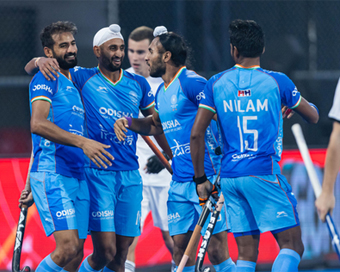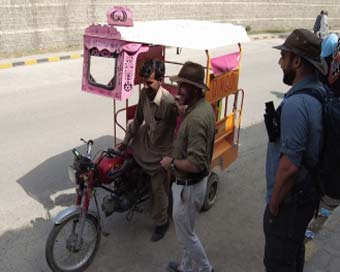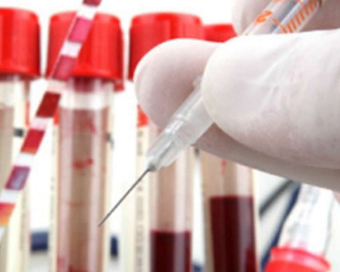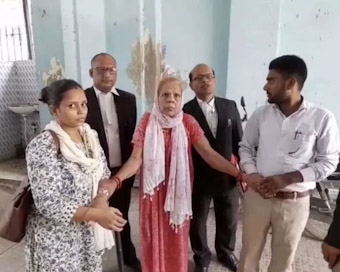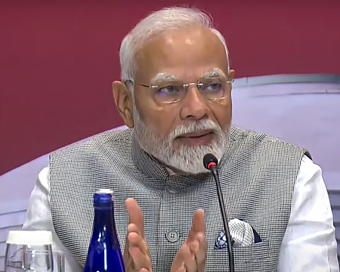 PM Modi visit USA
PM Modi visit USA Only the mirror in my washroom and phone gallery see the crazy me : Sara Khan
Only the mirror in my washroom and phone gallery see the crazy me : Sara Khan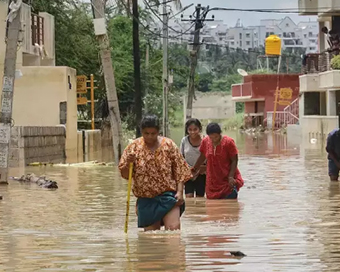 Karnataka rain fury: Photos of flooded streets, uprooted trees
Karnataka rain fury: Photos of flooded streets, uprooted trees Cannes 2022: Deepika Padukone stuns at the French Riviera in Sabyasachi outfit
Cannes 2022: Deepika Padukone stuns at the French Riviera in Sabyasachi outfit Ranbir Kapoor And Alia Bhatt's Wedding Pics - Sealed With A Kiss
Ranbir Kapoor And Alia Bhatt's Wedding Pics - Sealed With A Kiss Oscars 2022: Every Academy Award Winner
Oscars 2022: Every Academy Award Winner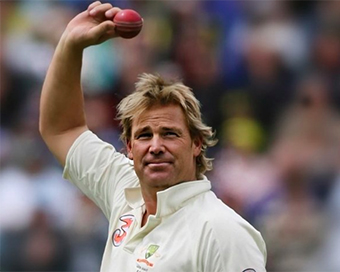 Shane Warne (1969-2022): Australian cricket legend's life in pictures
Shane Warne (1969-2022): Australian cricket legend's life in pictures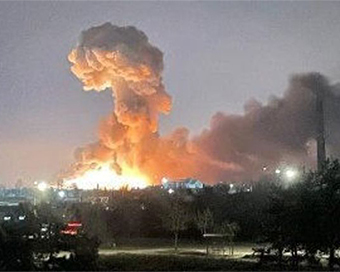 Photos: What Russia's invasion of Ukraine looks like on the ground
Photos: What Russia's invasion of Ukraine looks like on the ground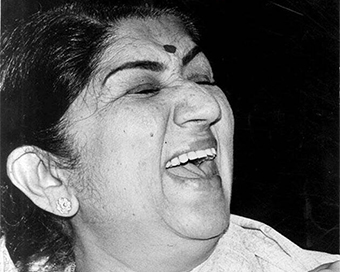 Lata Mangeshkar (1929-2022): A pictorial tribute to the 'Nightingale of India'
Lata Mangeshkar (1929-2022): A pictorial tribute to the 'Nightingale of India'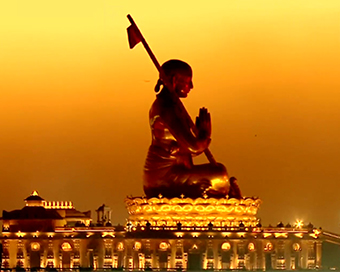 PM Modi unveils 216-feet tall Statue of Equality in Hyderabad (PHOTOS)
PM Modi unveils 216-feet tall Statue of Equality in Hyderabad (PHOTOS)Hockey India has announced a 54-member core probable squad for the upcoming senior men’s
- Satwik-Chirag return as BAI names 14-strong squad for BWF Sudirman Cup Finals 2025
- Men’s Sr Hockey Nationals to be played in division-based format from April 4
- Mensik denies Djokovic 100th title in Miami final
- KIPG: Son of a vegetable vendor, Bihar’s Jhandu Kumar eyes Worlds, 2028 Paralympics
- Hardik Singh credits hard work and team unity for receiving HI Midfielder of the Year award
Big milestone: Indian metro network now third-largest in the world Last Updated : 05 Jan 2025 01:54:10 PM IST 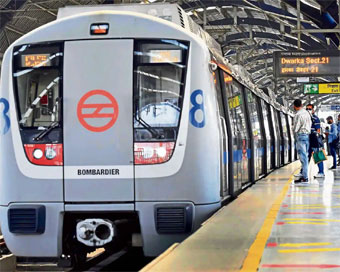
Big milestone: Indian metro network now third-largest in the world India has achieved a remarkable milestone by reaching 1,000 kilometres in its metro network, solidifying its position as the world's third-largest metro system.
This remarkable achievement follows the announcement of new metro projects and the Namo Bharat initiative for Delhi under the leadership of Prime Minister Narendra Modi.
The journey of India's metro network, which began in 2002 with the launch of the modern metro by former Prime Minister Atal Bihari Vajpayee in Delhi, has now reached this nationwide milestone. The transformation and expansion have been unprecedented under PM Modi's leadership, particularly since 2014.
In the past decade, the metro network has seen a threefold increase, with an additional 1,000 kilometres added to its length.
The number of states with metro services has grown from five to eleven, while the number of cities benefiting from metro connectivity has surged from five to 23.
Daily passenger ridership has also witnessed exponential growth, rising from 28 lakh in 2014 to over one crore, reflecting a 2.5 times increase. Furthermore, the total distance travelled by metro trains has tripled, climbing from 86,000 kilometres to an impressive 2.75 lakh kilometres.
Under PM Modi's vision, the Centre remains committed to providing seamless, affordable, and modern urban transport to enhance the ease of travel and the quality of life for millions of citizens.
As part of these transformative efforts, PM Modi is set to undertake a ride on the Namo Bharat Train from Sahibabad RRTS Station to New Ashok Nagar RRTS Station on Sunday morning.
This ride will mark the inauguration of the 13-kilometer stretch of the Delhi-Ghaziabad-Meerut Namo Bharat Corridor. Built at an estimated cost of Rs 4,600 crore, this corridor will significantly enhance regional connectivity between Delhi and Meerut, providing millions with high-speed and comfortable travel options.
In addition to the Namo Bharat corridor, PM Modi will inaugurate a 2.8-kilometer stretch of Delhi Metro Phase-IV between Janakpuri and Krishna Park. With an investment of Rs 1,200 crore, this marks the first operational segment of Delhi Metro Phase-IV.
Residents of West Delhi, including areas such as Krishna Park, parts of Vikaspuri, and Janakpuri, are set to benefit greatly from this development.
PM Modi will also lay the foundation stone for the 26.5-kilometer Rithala-Kundli section of Delhi Metro Phase-IV. With an estimated cost of ₹6,230 crore, this new corridor will connect Rithala in Delhi to Nathupur (Kundli) in Haryana.
It aims to boost connectivity across North-West Delhi and Haryana, positively impacting key areas such as Rohini, Bawana, Narela, and Kundli.
These initiatives mark another leap forward in India's urban infrastructure development, showcasing the government's resolve to create world-class transport systems that cater to the needs of a rapidly growing urban population.IANS New Delhi For Latest Updates Please-
Join us on
Follow us on








172.31.16.186

